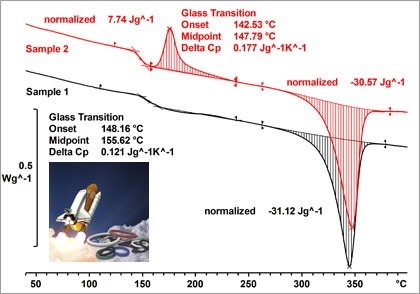
Quality control by thermal analysis is used to inspect products for irregularities that could compromise their quality. For example, by checking the level of crystallinity and the magnitude of the glass transition of an injection-molded part, one can measure the effects of cooling within the mold.
Requirements of Quality Control
A basic quality control system should routinely check required specifications and use these data to create a record of the production process. The first requirement for such a system is to have a Standard Operating Procedure or SOP, which describes exactly how to operate any instruments used and how to prepare samples. Finally, a periodic audit must be conducted to check the quality control procedures.
Quality Control by Thermal Analysis
The most important effects that can be analyzed by DSC are the melting behavior, glass transition, chemical reactions and the influence of fillers.
The main applications of TGA are content analysis, thermal stability and evaporation behavior.
TMA is normally used to study the expansion, shrinkage or melting behavior of materials and uniquely CTE.
DMA is the best method for characterizing the viscoelastic behavior of materials, including glass transition measurement, especially for composite materials.